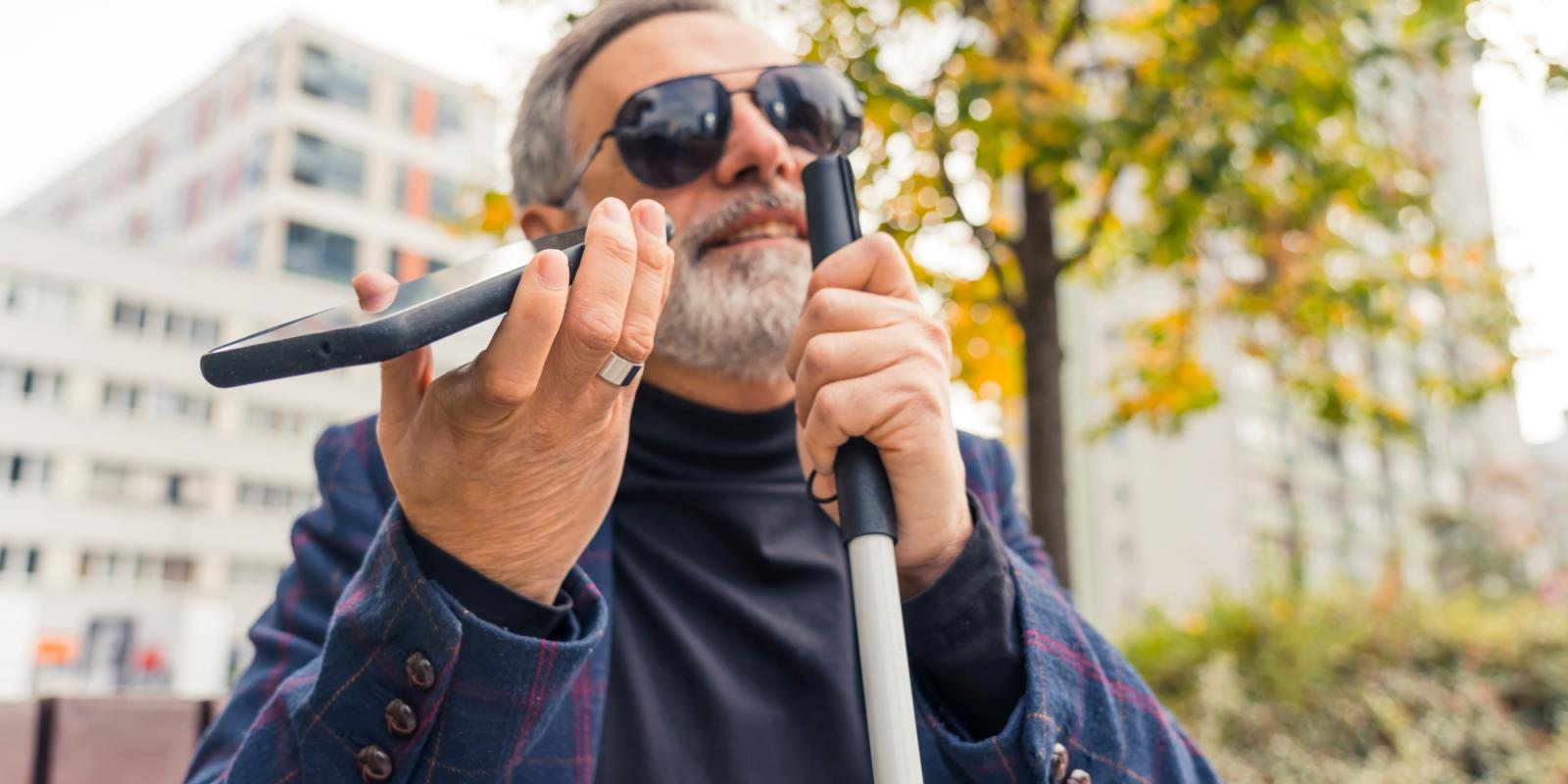The doctor says, “There’s nothing more that can be done for your vision loss … .” Tragically, this happens all too often for older people who are diagnosed with permanent severe vision loss from conditions such as macular degeneration, glaucoma or diabetic retinopathy. Perhaps what the doctor meant to say was, “There is nothing medically that can be done to improve your vision.”
There is plenty more to do for people with low or no vision, starting with a referral for vision rehabilitation services. Vision rehabilitation professionals can open up a transformative world of managing everyday tasks with reduced vision effectively.
According to the American Academy of Ophthalmology, “Provision of, or referral to, vision rehabilitation is now the standard of care for all who experience vision loss.” And yet, as of 2017, only 4.3% of older people with vision loss are receiving these services.
“We are one of the best-kept secrets,” vision rehabilitation professionals will quickly tell you. Unless you have a friend or family member with vision loss, chances are, you won’t know where to look for these highly trained professionals. You may not even know they exist because they are most often found in state agencies providing services for individuals with vision loss, vocational rehabilitation, nonprofit agencies, or through the Veteran’s Administration health system.
Professionals in these organizations are trained in an educational or social model of rehabilitation, which means their focus is on improving the functional abilities of people. Most have a master’s degree, plus national certifications in their area of expertise from the Academy for Certification of Vision Rehabilitation & Education Professionals (ACVREP),or the National Blindness Certification Board (NBPCB).
Vision rehabilitation professionals include the following specialists as part of a comprehensive vision rehabilitation team:
- Certified Vision Rehabilitation Therapists (CVRT) teach independent living skills.
- Certified Orientation & Mobility Specialists (COMS) teach individuals how to travel independently and safely indoors and out.
- Certified Low Vision Therapists (CLVT) work with a low-vision optometrist or ophthalmologist to explore options and train people to use low-vision devices.
- Certified Assistive Technology Instructional Specialists (CATIS) help people who are blind or visually impaired achieve their goals using assistive technology.
- Vocational rehabilitation counselors help people with blindness and low vision maintain their careers or return to work, and case workers often oversee an individual’s training.
For decades, research has indicated a high correlation between vision loss and depression, particularly after the loss of one or more major life activities, like driving, working, reading, etc. Vision loss acquired later in life will often require a period of adjustment, which will differ for each individual. Vision rehabilitation professionals meet each client wherever they are in the adjustment process to provide training and resources in adaptations to daily living activities to help older people accommodate for reduced vision and maximize their adjustment process. Vision rehabilitation focuses on the individual’s goals and functional abilities. For example, if reading print visually is no longer possible, clients might be introduced to lighting, magnification, the Library of Congress Talking Book Program, or text-to-speech devices to resume reading, regardless of the level of their remaining vision.
‘ “We are one of the best-kept secrets,” vision rehabilitation professionals will quickly tell you.’
On the Recruit CVRT YouTube channel, an older woman with low vision highlights the tremendous benefits of vision rehabilitation, including learning how to use assistive technology to help her manage finances, utilizing templates to write notes and cards, adjusting lighting to enhance cooking, and using electronic video magnifiers to read the books and newspapers she hasn’t been able to enjoy for years. “These are all very important to me. It’s been so helpful for me to have a productive and actually peaceful life because I can now do things,” she said.
Many causes of vision loss are age-related, so as the population ages, there is increasing demand for vision rehabilitation professionals. If you or someone you know is interested in a rewarding career, the Older Individuals who are Blind Technical Assistance Program (OIB-TAC) Recruitment page and the Association for Education and Rehabilitation of the Blind and Visually Impaired (AER) Career Center are both excellent resources for finding personnel preparation programs in vision rehabilitation.
“The significance of the impact, and the immediate intensity of the impact, is something that I was not prepared for,” said John McMahon, PhD, reflecting on his career as a CVRT and the impact vision rehabilitation has on many people. “And, when you see, literally in 15 minutes, the life-changing, transformative things that we do for clients … and they take control of their lives … to be in the middle of that is about the coolest job I have ever had,” McMahon added.
Vision rehabilitation is a life-changing gift that should be shared with friends, family, patients, and clients. To find a vision rehabilitation professional, call the ConnectCenter at 800-232-5463 or search for services by state using the ConnectCenter Directory of Services.
For more information on The Reality of Aging and Vision Loss in America, Vision Rehabilitation Can Complete the Continuum of Care, Vision Rehabilitation—Help and Hope, Vision Rehabilitation Helps Older Adults Thrive, and Shining a Light on Inclusion: Empowering People with Vision Impairment, read the first five articles in this series by VisionServe Alliance.
Steve Kelley, CVRT, CRC, CATIS, entered the vision rehabilitation and assistive technology field as a computer user with acquired vision loss. Most of Kelley’s professional experience has been working face-to-face with adult learners in their homes and center-based programs. He now works with the Assistive Technology Team at Hadley as a learning expert, developing training workshops and working with learners remotely.













